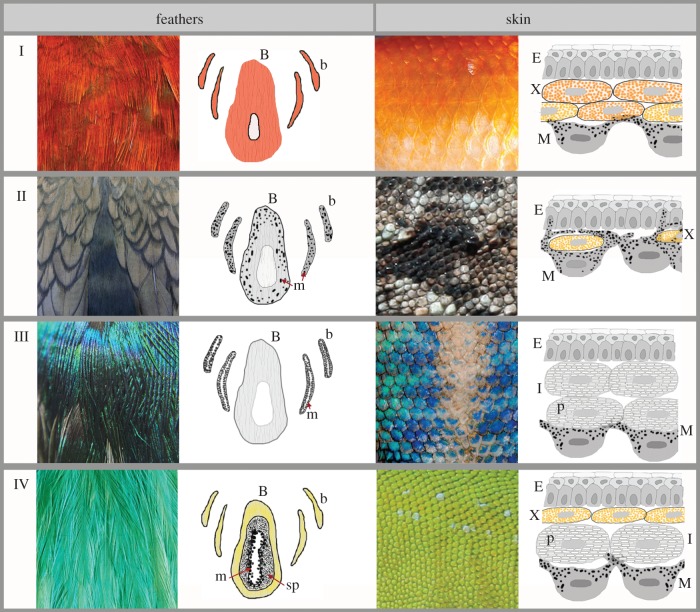Figure 2.
Mechanisms leading to the production of colours in feathers and skin (fish, reptile and amphibian). (I) Colours produced predominantly by red or yellow pigments (e.g. carotenoids, pteridines), (II) dark browns and blacks produced by melanins, (III) examples of predominantly structural coloration, (IV) examples of combined pigmentary and structural colours. Drawings on the centre left represent cross sections of feather barbs and barbules; B = feather barb, b = barbule, m = melanosome, sp = keratinous spongy layer. Drawings on the far right demonstrate cross sections of fish, amphibian and reptile epidermis showing layers of different chromatophores; E = epidermis, x = xanthophore, M = melanophore, I = iridiphore.

